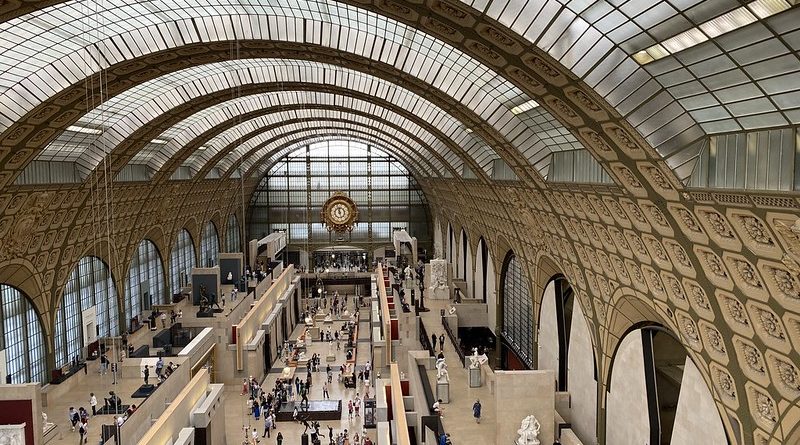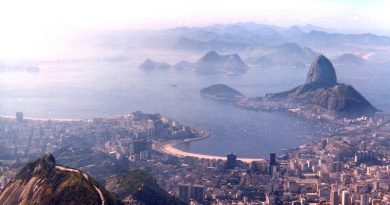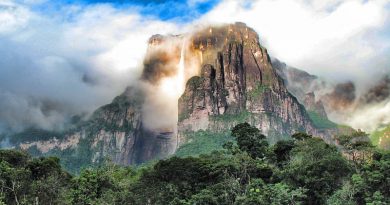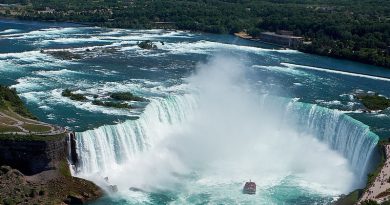The Regions of France
France is one of Europe ‘s largest countries by landmass and has a wide array of regions – more than a dozen in all each with their own distinct culture and history . Here they are:
01. The Ile de France
The Ile de France, the 8000 sq mile region cushioning Paris means ‘Island of France’ is so-called because of its location between four rivers (the Aube, the Marne, the Oise and the Seine).
It was from this area that the kingdom of France began to grow from around the 12th century. Painted by the hands of Degas, Monet and Cezanne, it is adorned with many chateaux, Gothic cathedrals, feudal castles, restful villages and forests. Indeed, with its excellent transport options and its wealth of amazing sites it is extremely popular with Parisian day-trippers and can suffer from overcrowding much of the year.
02. Normandy
The countryside of Normandy, so reminiscent of the landscape of Southern England, with its verdant fields divided by trees and hedgerows and winding lanes, is dotted with testaments to its important past. Rouen and Bayeux reflect the influence of the Dukes of Normandy, the descendants of the Vikings who spawned William the Conqueror and led to brief French rule of England; the latter town is also home to the 11th century Bayeux Tapestry.
The D-Day Beaches are probably its most-visited site as the scene of British and American heroism during the epic struggle to rid Europe of the Nazi forces in the Second World War. Not far from here is one of Europe’s most famed sights, the abbey of Mont St Michel, which dates from the eighth century.
There’s plenty of natural beauty on offer here too, including Giverny, the home and garden of Claude Monet and some fine beaches at the towns of Honfleur, Deauville and Trouville.
03. Brittany
The north-western tip of France is distinctly different in culture, language and pace from the rest of France. It was colonised by the Celts from across the Channel during the Dark Ages (which gave rise to its name ‘Little Britain’) and remained independent from France until the sixteenth century.
Many consider there to be two Brittanys – the coast, known as Armor (meaning Land of the Sea) where Neolithic monuments and ruined forts crown rocky coves buffeted by the rough Atlantic Ocean. This is what most people come to the province for, its sandy beaches, offshore islands and prehistoric stone formations like those of Carnac (which rival England’s Stonehenge).
Meanwhile the interior, known as Argoat (Land of the Woods), is far-less visited and many Bretons maintain their traditions, living in hamlets and stone farmhouses surrounded by wistful moors of heather and broom and preserving their unique language which is closely related to Welsh.
04. Loire Valley
This region, bordered by vineyards, is rich with the castles and chateaux of leaders, princes and kings who sheltered here between the 9th and 18thcenturies. Tourists flock here in their droves to drink in the chivalry and intrigue of these august abodes.
The early chateaux were built in defence against the pugnacious Vikings of the North between the ninth and eleventh centuries; closer to castles than houses they were fitted with walls, battlements and moats. As the fear of attack subsided in the fifteenth century, castles gave way to a new architectural style more concerned with aesthetics. The typical Loire chateau mixes late Gothic excess with the beauty of the Renaissance to produce some of the world’s most romantic palaces – the Chateau d’Ussé is a case in point. Other favourites include Chenonceaux, Chaumont, Chambord, Cheverny and Amboise. The Loire also offers the gardens of Villandy, outside Tours; the abbey at St Benoit-sur-Loire; the amazing tapestries of Angers and the charming city of Orleans.
05. Atlantic Coast
The stretch of sandy coast from the Loire to the Gironde is as flat as Holland (in fact the marais – marshes – just inland were drained with the help of Dutch experts) and almost as Mediterranean as its neighbour Spain. Here you’ll find some charming other-worldly resorts such as Les Sables-d’Olonne and Arachon with its enormous sand dune, its great ports of La Rochelle and Rochefort and the brandy-producing town of Cognac. Inland you can join the medieval pilgrims’ trail to Compostela stopping at its distinctive Romanesque churches including Aulnay and St Savin.
06. The Southwest
This part of France, set apart by the exceptionally beautiful valleys and gorges and rivers Dordogne, Lot, Aveyron and Tarn, has steered clear of the impingements of history since the Wars of the Religion. As a result, it has a fabulous legacy of medieval chateaux, villages, thirteenth century new towns (bastides) and Gothic and Romanesque churches. Dordogne is a vast area of 3,500sq miles in Southwest France. Its former name is Perigord, and the French often refer to it as this still. It is heavily forested with oak and chestnut trees and home to the famous “black diamond” truffles, a gastronomic delicacy. Highlights include water sports on the Dordogne, an exceptionally clean river, or a visit to Baynec Chateau. It’s also got the world’s greatest concentration of Palaeolithic art discovered in the Grotte de Lascaux which has been dubbed the ‘Sistine Chapel of Prehistoric Art’ but is closed to the public due to deterioration.
07. The Pyrenees
The Pyrenees is a culturally and geographically diverse region that offers a fabulous range of hiking and waking activities across its wet and green west, snow-capped craggy central region and Mediterranean east. There are several alpine resorts and skiing opportunities in winter.
Pilgrims make their way tot he sleep village of Lourdes, site of a Christian miracle. In 1858 Bernadette Soubirous, a fourteen year old peasant girl who saw visions of the Virgin Mary on eighteen occasions. These sightings were investigated by the Vatican which confirmed them. Now people flock to Lourdes in their millions for miracle cures, spiritual help and guidance. The spring water is thought to have healing powers. Bernadette Soubirous later became a nun and was later canonised St Bernadette.
Lourdes is as sacred a place as the Wailing Wall is to Jews Mecca to Muslims and the Ganges to the Hingus.
08. The Basque Country
Sandwiched between France and Spain, the Basque region remains its own little country in many ways. It was one of the last English held towns to give in to the French, and with it’s own language that is unrelated to any other in the world, there are still calls today for it’s independence. The Basques were the first Europeans to cultivate their own tobacco, to embrace hot peppers from the Americas, break the Dutch monopoly on chocolate and the first to popularise the beret as a fashion piece.
09. The North
Northern France, encapsulating Nord Pas-de-Calais and Picardy (which include the historical French Flanders and Hainaut along its border with Belgium), is one of the least romanticised areas of France. Its heavy industrialisation besmirched its reputation in the nineteenth century when writers like Zola exposed the hardships of the lives of coal miners; with the decline of heavy industries its name has only blackened further. Its northern position has also made it the entrance point for several marauding armies over the centuries and events in Flanders, Artois and Picardy have influenced the path of French history. The Somme will forever be linked to the terrible battles of World War Two.
In light of this pivotal historical role, the north actually has much to offer. Picardy has two of France’s best cathedrals in Amiens and Laon, Lille is the region’s lively capital, the city of Arras is a gem with its gabled squares and the sobering war cemeteries of the Somme Valley are a testament to the futility of war. You will undoubtedly pass through Calais when travelling to or from Great Britain by ferry or Eurostar.
10. The Northeast
East of Paris the landscapes open up in a flush of contrasts. The agricultural Champagne region is famous for its sparkling wines; according to French law only wine from certain areas here – produced to strict guidelines – can be labelled champagne. Apart from the vineyards and wine-production centre Epernay, you’ll find the attractive ancient city of Troyes and the Roman city of Reims, somewhat denuded by its suburban sprawl but still offering upmarket restaurants, wide tree-lined avenues and large squares.
Further east, the provinces of Lorraine and Alsace have been historically disputed by Germany and France. Though very different, they were solidified together in the French mind since they were annexed by Germany in 1871 and did return to French rule until after World War One in 1918.
Lorraine is associated with Joan of Arc, Verdun and Charles de Gaulle and is one of France’s major industrial areas with much of the population concentrated in urban towns. Despite this, a third of the land is forest and its capital Nancy is awash with history, summed up by its opulent Central Square and creamy buildings. Over the red sandstone Vosges range, Alsace is a gorgeous region of timbered cottages and pretty window boxes that are distinctly Germanic in flavour. Its capital Strasbourg is crowned with a fabulous Gothic cathedral.
11. Burgundy
Beautiful, rural Burgundy is synonymous with superb wine and gastronomy and attracts connoisseurs from all over the world to Beaune, the capital of its wine trade and great vineyards. In bygone times, however, the region was known for its power and wealth; in the fourteenth and fifteenth centuries the dukedom of Burgundy was larger and more powerful than the Kingdom of France, taking in the territories of Holland, Flanders, Luxembourg, and much of what’s now Belgium and northern France.
Burgundy even sided with the English during the Hundred Years War, selling them Joan of Arc. The legacy of that period is everywhere to be seen: in the dukes’ capital Dijon, the great abbeys of Vézelay and Fontenay, in the ruins of the monastery of Cluny and in the chateaux of Tanlay and Ancy.
There are plenty of activities to work off that over-indulgence too, there’s a wide range of hikes in the Parc Régional du Morvan and the Cote d’Or, barge trips along the Canal de Bourgogne and the Canal du Nivernais and a number of companies offer hot air balloon rides over Burgundy.
12. The Rhone Valley and the Auvergne
The Rhone Valley was the north-south route used by ancient armies and medieval traders and has become very industrialised. The valley’s concentration of industry, exemplified by the Marcoule and Tricastin nuclear power station on the banks of the Rhone River, means that people pass through it as quickly as possible. However there are certainly attractions off the main routes. France’s second major city alongside Marseilles, Lyon, is a gastronomic delight with hundreds of restaurants and bars among its Renaissance buildings. The area east of the Rhone, Ardeche, has lovely villages like Vogue, Rochecolombe and Balazuac. The Grotte Chauvet has exceptional prehistoric cave paintings.
The Auvergne region is a dreamy place of dramatic extinct volcanoes. The Monts Domes range of volcanic craters range up behind the capital, Clermont-Ferrand. Here you can see an example of the distinctive architecture that reflects the geology of the area, the splendid coal-black cathedral. Old worldly spa towns give the area a tumbledown charm.
13. The Alps and the Jura
The French Alps, famous for their lustrous green valleys snuggled under soaring, snow-tipped mountains, stretch for over 200 miles from Lake Geneva in the north virtually all the way to Provence in the south. This awesome mountain range, long regarded terrifyingly beautiful but dangerous, has become Europe’s playground for the elite. In winter, people come from across the globe to the fine ski resorts; in summer people take advantage of the miles of hiking trails as well as engaging in warm weather activities like paragliding and swimming. Grenoble, capital of Dauphine, provides the region with big-city amenities.
The Jura mountain range is one of France’s last great unexplored areas. Part of the Franche-Comté area, it’s a great destination for people looking to get away from the tourist crowds. The range of dark, almost menacing wooded hills and plateaux provide France’s premier cross-country skiing area as well as being a great place for hiking and nature trails. For a spot of architectural wonder, Le Corbusier’s chapel near Ronchamp is a must-see.
14. Provence and the Cote d’Azur
Provence and the Cote d’Azur are France’s two most visited regions and if you choose your time carefully, arriving at the turn of the season, you’ll discover just why they’re as popular as they’ve become. Provence has been captivating people for millennia with its glorious sunshine and intense colours. It was the Romans’ beloved Provincia and many cities and towns date from this period and offer a stunning array of cultural treasures from Roman theatres (still used for festivals) to medieval forts and big public spaces in which locals spend a vast amount of time enjoying the good life.
The Cote d’Azur, aka the French Riviera, is synonymous with the rich, beautiful and tanned. While it’s suffered from its popularity somewhat there’s still a lot to recommend itself, sun, sand, warm seas and a cultural melange. West of St Tropez is the region’s most unspoiled coastline where beaches nestle between capes and cliffs.
Monaco
Monaco is the hotspot for glamour, style and jet setting. The Principality of Monaco and been under the rule of the Grimaldi family since 1297 and has been ruled since 1949 by Prince Rainer who married Hollywood icon Grace Kelly. Princess Kelly sadly died in 1982 in a car crash in the hills above Monaco. Monaco is famous for its Hotel de Paris full of famous and infamous celebrities, and the notorious Monaco Casino, known as the Cathedral of Hell. It’s good luck at the casino to rub the knee of the bronze horse at the door bearing Louis XIV. The casino was created in 1848 as Monaco was the poorest state in Europe, and the Prince created the new casino to raise its fortunes. It is now the most famous building in the Cote D’Azure.
Grasse
Deep in the heart of France’s natural floral hothouse, flowers are not just for picking and smelling. For thousands of years France has been known as the centre of the perfume industry and Grasse is the perfume capital of the world. In the 16th Century, Grasse was known for perfumed gloves. When these fell from fashion, the perfume industry was born. It began with the jasmine flower, the most delicate flower for perfume. Grasse contains over 200 fields of perfume flowers. The flowers are washed in alcohol and drained of their fragrance, distilled, and chilled to make a pure flower oil. A highly skilled person known as a Nez (nose) will mix the perfumes. The Nez is like a composer creating a symphony of smells from over 2000 different scents. His bench is known as a perfume organ for creating masterpieces, and in this magical town you can have your own bespoke perfume created.
15.Languedoc and Roussillon
Languedoc-Roussillon is fast developing a reputation as a preferable alternative to Provence as a Mediterranean destination. It’s blessed with rugged scenery, lengthy sandy beaches and the most vineyards in France. The region was created recently and its heartland is the Bas Languedoc where the Occitan (the ‘langue d’oc’ – the language of Oc) movement, demanding recognition of its cultural and linguistic distinctiveness) has its power base. The area has many places of interest; the city Montpellier is one of France’s most dynamic and progressive, Nimes has impressive Roman ruins and Cordes and Carcassonne are lovely medieval towns.




